It was not unexpected, but the Icefall Doctors hit a snag when fixing the route. They struggled to find safe passage through the upper Icefall for several days. They had expected to reach Camp 1 about now and Camp 2 next week, but it obviously will take longer. Meanwhile, teams are preparing to return to Tibet for the first time in four years.
The Everest permit tally is now 130 foreigners across 11 teams. Many more to come.
Icefall Woes
The Icefall Doctors are experts in navigating the route, but every now and then, it gets tough, and this year is proving such.
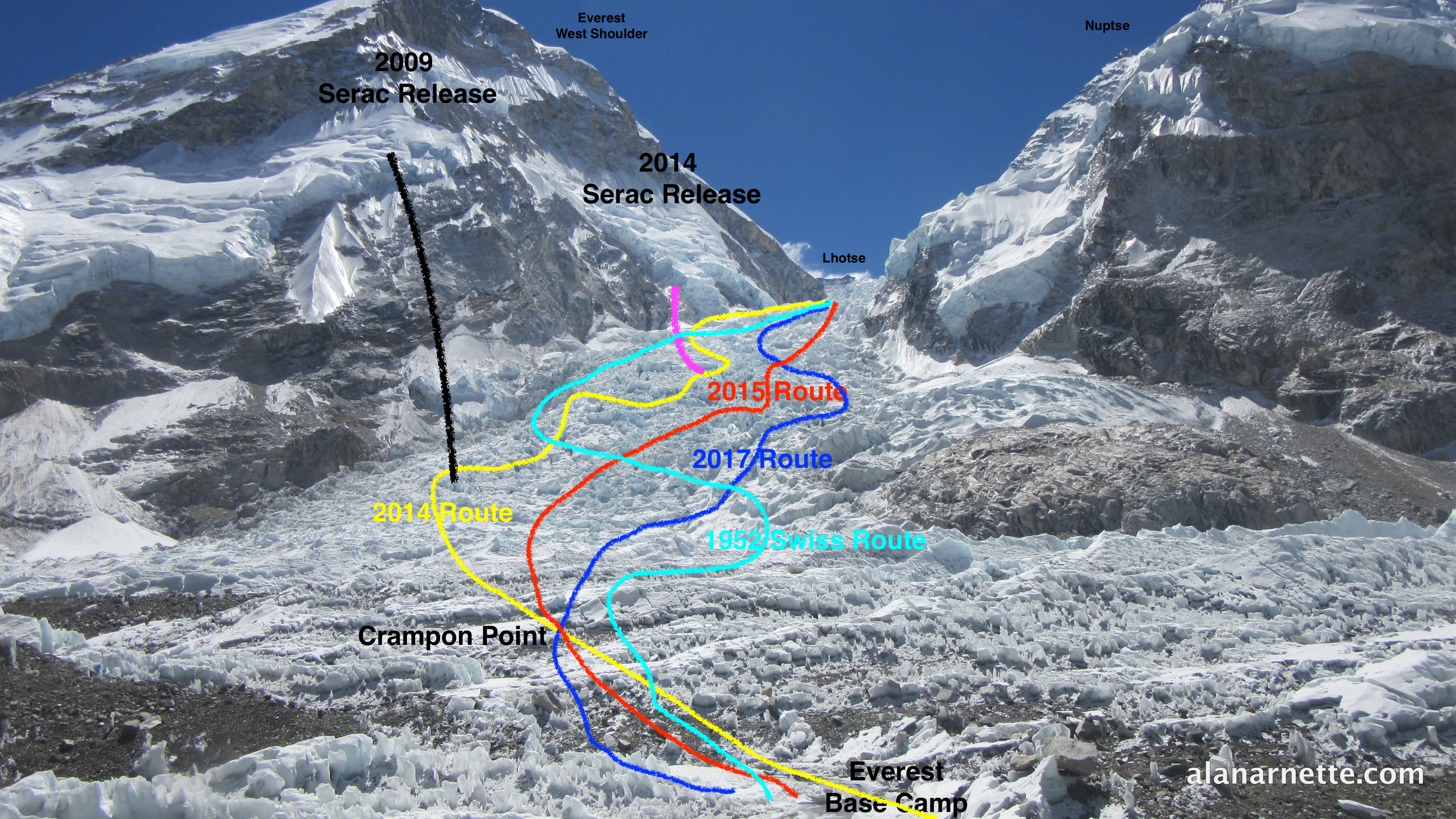
The upper Icefall is a jumble of house-sized ice blocks strewn apart as the glacier falls from the Western Cwm. Gravity pulls them apart, while the friction at the base against the rocks keeps them in place. The end result is huge gaps that often require long ladders to cross.
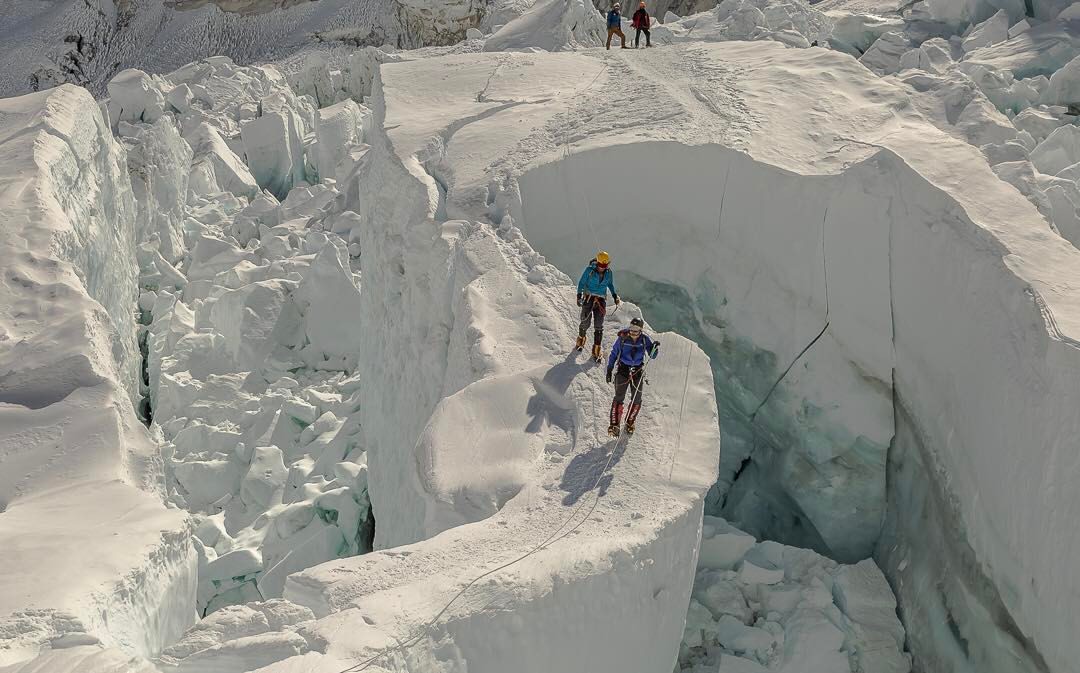
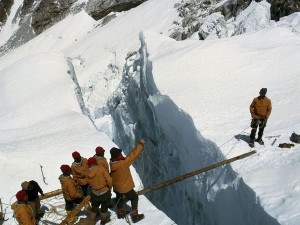
In 1951, the British team led by Eric Shipton climbed through the Icefall but stopped just short of the top because of a wide crevasse. To cross the crevasses, the early expeditions used long tree trunks brought up from tree line after they ran out of ladders.
I’ll dedicate a post to the Icefall and discuss ways to be safe, but contrary to popular belief and media reports, there are more dangerous sections on the Nepal side than the Icefall. Yes, if measured by single events, more deaths have occurred there, such as in 1970, when six Sherpas died in the Icefall, in 2014, when sixteen Sherpas died when a serac collapsed off West Shoulder, and last year, 2023, when three Sherpas died in the upper Icefall when it collapsed.
However, more people die in other places on the Nepal side of Everest than in the Icefall. From 1953 to 2019, there were 51 deaths in the Icefall, or 23% of the 217 deaths on the Nepal side. In fact, according to the Himalayan Database, there have been 66 deaths above 8000-meters or 30% of the total Nepal side deaths. Regardless, the Icefall is not a place to linger.
So, when can we expect the route to be through the Icefall? History shows between April 2 as in 2017, and as late as April 16 like in 2010.
| Icefall In | # Ladders | |
| 2009 | April 14 | 17 |
| 2010 | April 16 | ~24 |
| 2011 | April 11 | ~27 |
| 2012 | April 4 | ~25 |
| 2013 | April 5 | ~28 |
| 2014 | April 5 | ~24 |
| 2015 | April 4 | 22 |
| 2016 | April 9 | 23 |
| 2017 | April 2 | 21 |
| 2018 | April 4 | 20 |
| 2019 | April 5 | 20 |
| 2020 | Closed | Closed |
| 2021 | April 3 | ~10 |
| 2022 | April 7 | ~10 |
| 2023 | April 5 | ~7 |
| 2024 | TBD | TBD |
Moving Higher on the Nepal Side
We see many trekkers visiting Everest Base Camp, but I don’t believe any commercial teams have arrived yet. However, some are already at Lobuche. This 20,000-foot trekking peak is used to acclimate and reduce the acclimatization rotations through the Icefall. IMG is already at Lobuche:
Ang Jangbu reports that today Team 1 moved up to Lobuche Base Camp (15,500 ft /4,700 m) after their acclimatization day in Pheriche. To get there they followed the valley up to Thugla, then ascended the terminal moraine of the Khumbu Glacier to the Sherpa chorten memorials. Another hour of trekking up the Khumbu Glacier lateral moraine took them to the scenic Lobuche Base Camp, located at the foot of Lobuche Peak. Over the next couple days they will enjoy acclimatization hikes and having their own private camp and cooks. These nights they will spend at LBC are an important part of the team’s acclimatization profile, which will allow then to move into Everest Base camp well acclimatized.
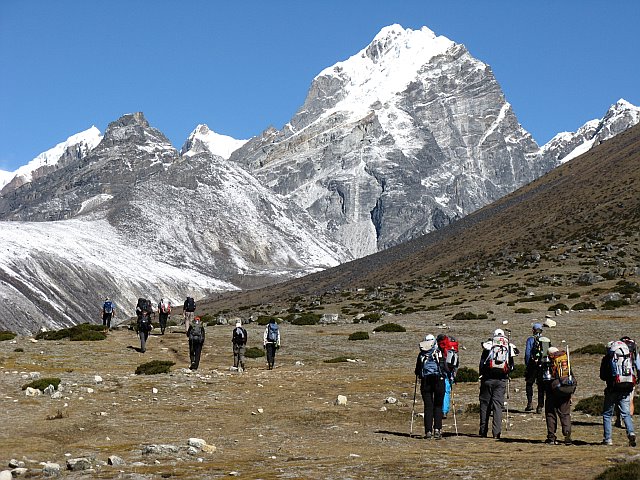
Ready for Tibet
Climbing Everest from Tibet always lags Nepal by a week or more. There are several reasons for this. First, you drive to Base Camp, taking a few days to acclimate, but it’s shorter than trekking the Khumbu. Second, the Camps are higher on that side, resulting in a shorter overall expedition. Then, some teams use “speed, flash, rapid” techniques where they use altitude tents to acclimatize back home, thus reducing the need for “rotations,” resulting in shorter overall expeditions, down to as quick as three weeks in some cases. In any event. We are still a few weeks away from much happening on that side.
Adarian Ballenger’s Alepnglow team is excited to return to the Tibet side after staying home the last four years:
Less then one month until the @alpenglowexpedtions family is back on Everest. The hype is real, and the energy in the Alpenglow office is off the charts. We’re packing, organizing, training, acclimatizing, and checking all the little details to ensure that everything is perfect. This will be my 13th season on Everest, and each season I’ve come home with new ideas and lessons for how to make Alpenglow’s expedition the highest quality on the mountain. From pioneering the Rapid Ascent approach, to choosing to only climb the mountain from the North Side, I’m proud of the program we’ve built and am beyond psyched to be back on Everest. Everest 2024, here we come!
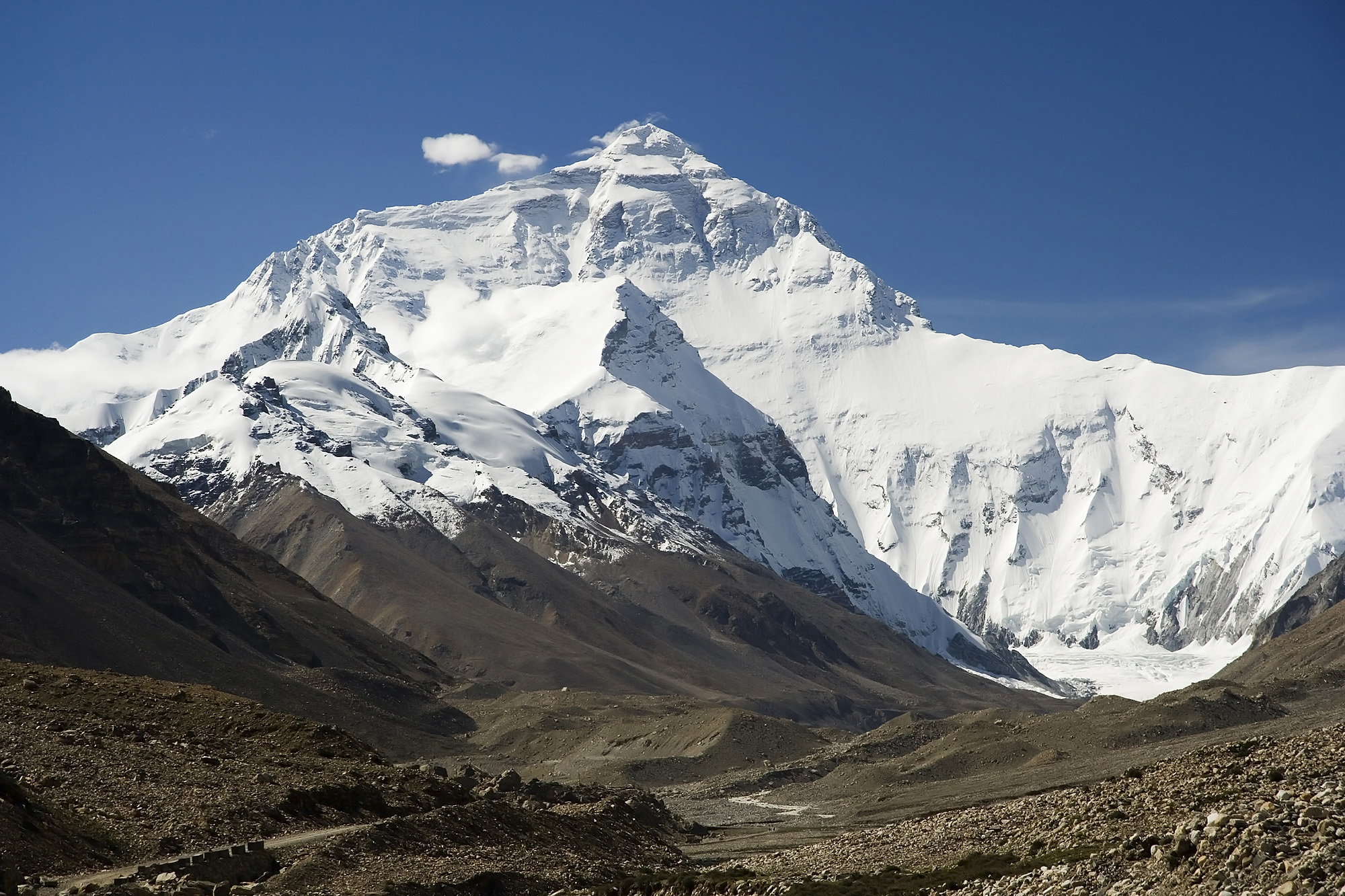
Here’s to a safe season on both sides.
Climb On!
Alan
Memories are Everything
The Podcast on alanarnette.com
You can listen to #everest2024 podcasts on Spotify, Apple Podcast, Breaker, Google Podcasts, Pocket Casts, RadioPublic, Anchor, and more. Just search for “alan arnette” on your favorite podcast platform.
Preparing for Everest is more than Training
If you dream of climbing mountains but are unsure how to start or reach your next level, from a Colorado 14er to Rainier, Everest, or even K2, we can help. Summit Coach is a consulting service that helps aspiring climbers worldwide achieve their goals through a personalized set of consulting services based on Alan Arnette’s 30 years of high-altitude mountain experience and 30 years as a business executive. Please see our prices and services on the Summit Coach website.
Everest Season Special through May 31, 2024: 10% discount on all plans. Mention Everest 2024.

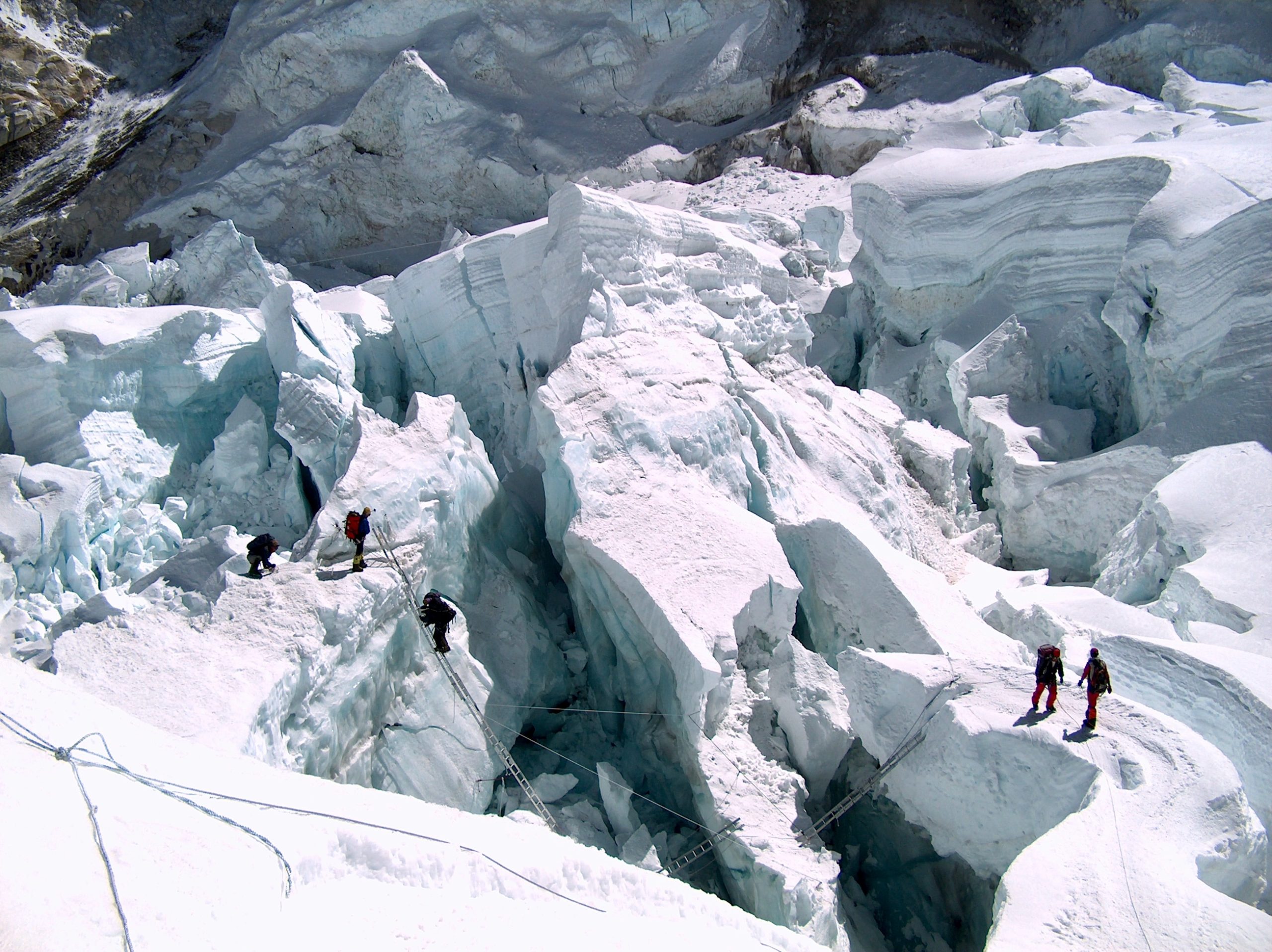


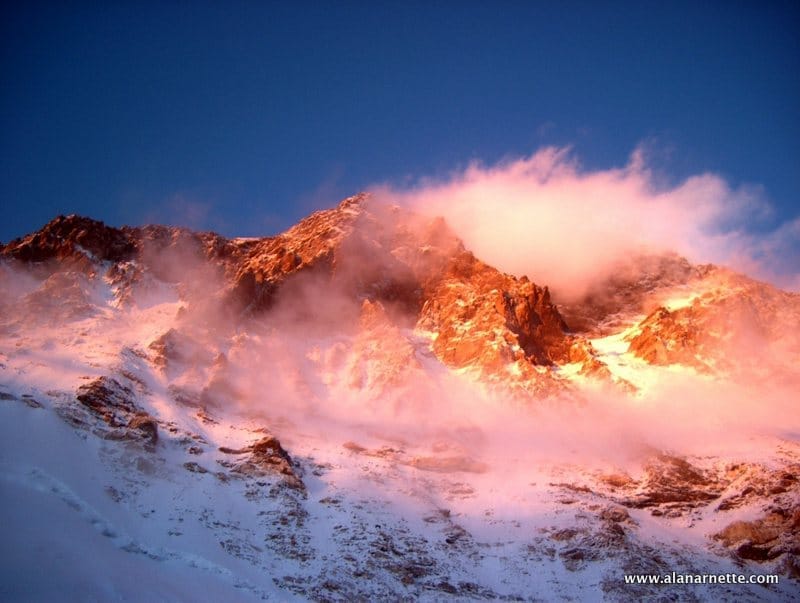
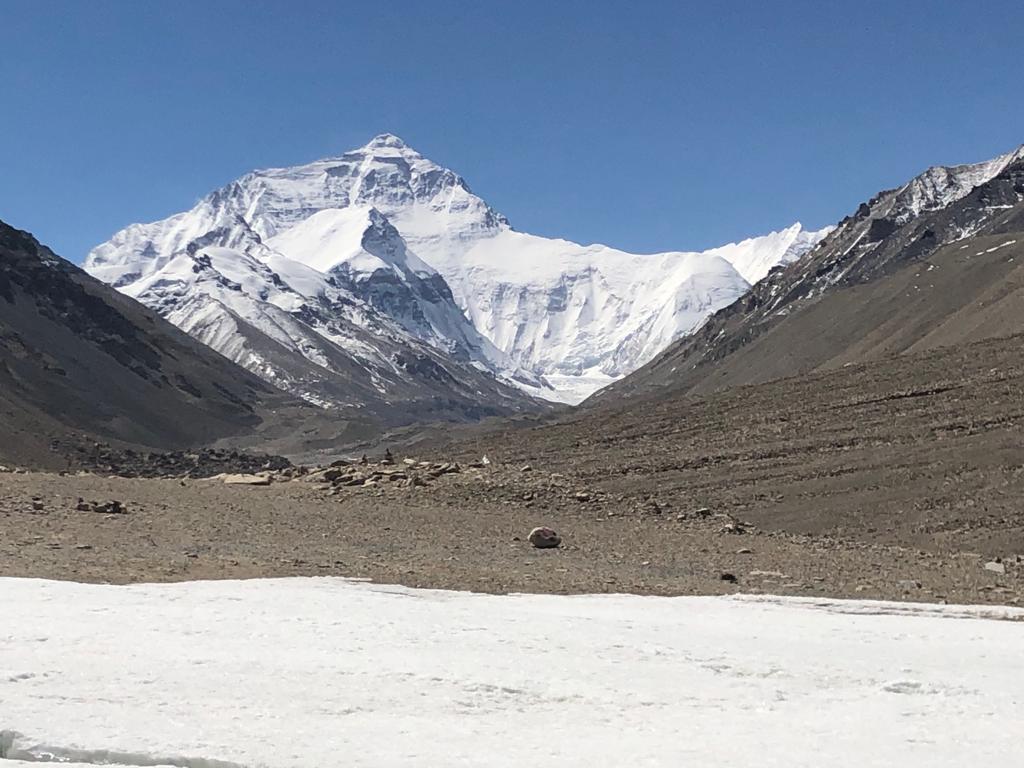
5 thoughts on “Everest 2024: Snag in the Icefall Route”
Out of interest, do they use drones to survey routes through the icefall nowadays? Obviously nothing beats boots on the ground, but you’d imagine they could discount some options with a drone.
Yes, drones are used occasionally, but I believe they are provided by commercial teams and not the Icefall Doctors or SPCC.
Why are roofs painted blue in the Himalayan regions of Nepal (???) Do you know why villagers and monasteries do this (???)
Actually blue roofs are popular throughout Asia. The theory is a blue roof, especially if flattish, collects and retains water thus reduces the risks of flooding and the need for storm water sewer systems in the area. Another thought is that blue roofs reflect sunlight and reducing the need for cooling. In other parts of the world tradition has it that a blue roof will repel evil spirits.If you Google “blue roofs” you’ll find all kinds of ideas, but I think the rainwater makes the most sense and is widely used in monsoon prone areas like Southern China, India and Nepal
This is what every traveler want to get before traveling to new destinations. I really appreciate. Thank you for keeping us update. Keep the good work. Best wishes. Nepal is my favorite destination to move around and explore.
Comments are closed.